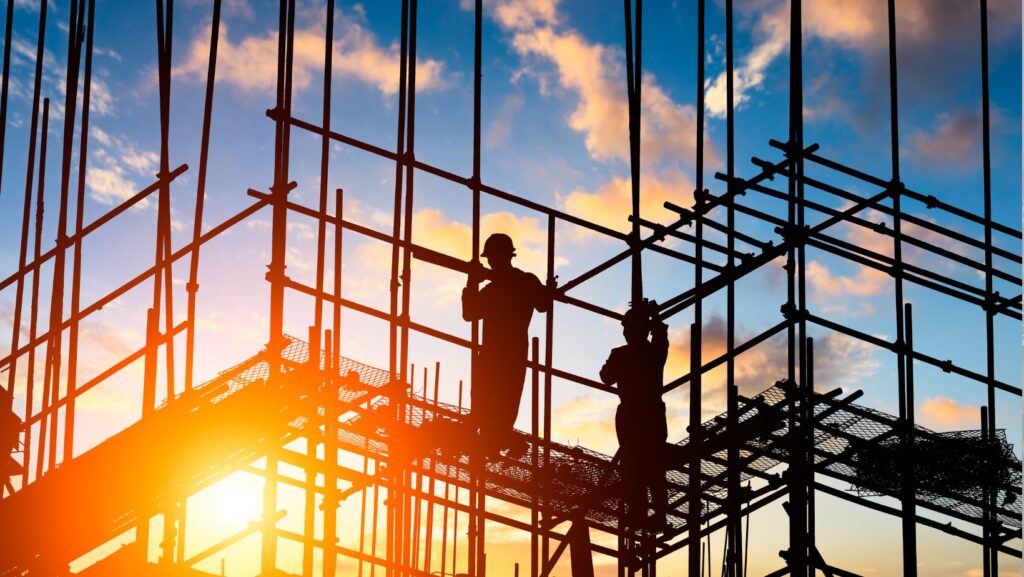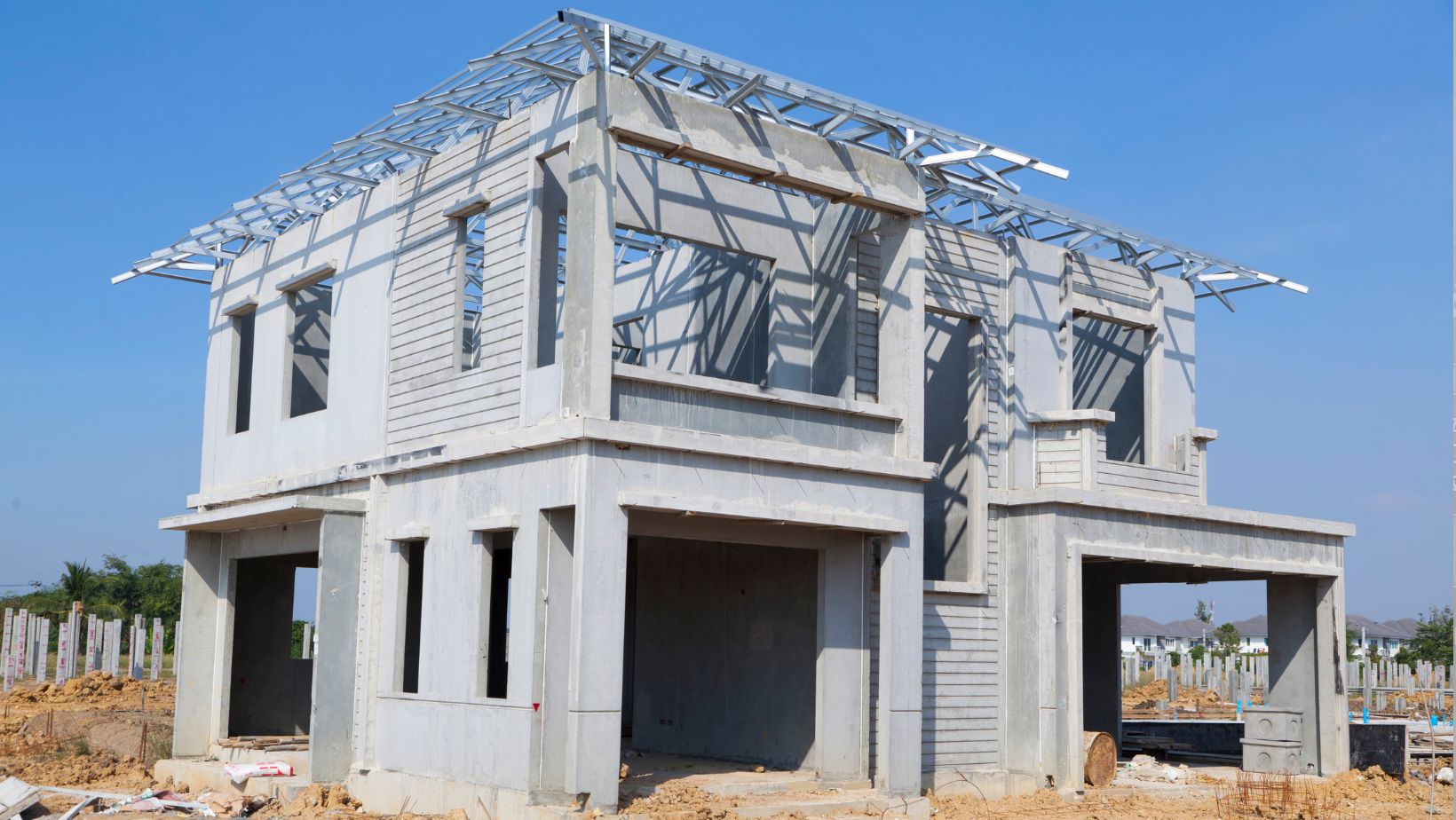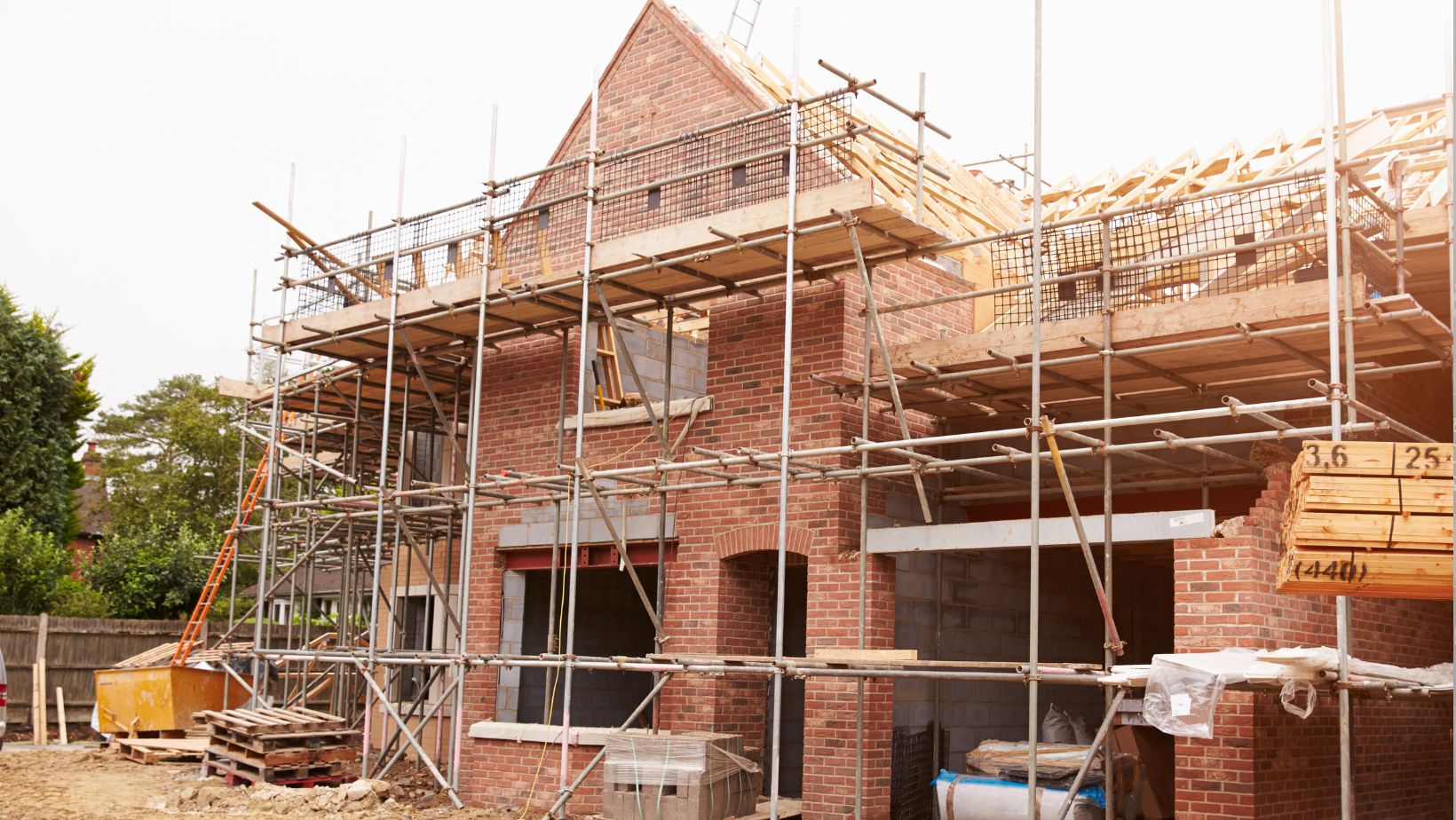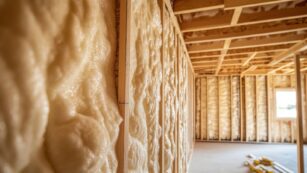
If you’re planning to build a new home in 2024, you’ll be happy to know that there are several exciting trends in home building that can make your dream home a reality. From eco-friendly designs to smart home technology, the latest trends in home building are all about creating comfortable, sustainable, and efficient living spaces that meet the needs of modern homeowners.
One of the top trends in home building for 2024 is sustainability. With a growing focus on reducing carbon footprints and preserving natural resources, many homeowners are looking for eco-friendly building materials and designs that promote energy efficiency and sustainability. This trend is driving the development of new technologies and materials that can help reduce energy consumption, lower utility bills, and create more comfortable living spaces.
Sustainable Materials and Practices
Eco-Friendly Insulation Options
When it comes to home building, insulation is an important aspect to consider. Not only does it help regulate temperature, but it can also contribute to the overall energy efficiency of the home. In recent years, there has been a push towards using more eco-friendly insulation options. Materials like recycled denim, cellulose, and wool are becoming more popular due to their sustainability and effectiveness. These materials not only reduce waste but also provide excellent insulation and soundproofing.
Solar Panel Integration
Solar panels have been around for a while, but their popularity has been steadily increasing in recent years. With advancements in technology, solar panels have become more efficient and cost-effective. Homeowners are now able to save money on their energy bills while reducing their carbon footprint. Solar panels can be integrated into the design of the home, whether on the roof or as part of the exterior walls. This not only provides a sustainable energy source but can also add to the aesthetic appeal of the home.
Water Conservation Systems
Water conservation is becoming increasingly important, especially in areas prone to drought. For example, Western Australian home builders are now incorporating water conservation systems into their designs to help reduce water usage and waste. These systems can include rainwater harvesting, greywater reuse, and low-flow fixtures. Rainwater harvesting involves collecting rainwater from the roof and storing it for later use. Greywater reuse involves using water from sinks, showers, and washing machines for non-potable purposes such as watering plants. Low-flow fixtures are designed to use less water without sacrificing performance.
By incorporating sustainable materials and practices into home building, you can reduce your carbon footprint and save money on energy and water bills. With these eco-friendly options becoming more accessible and affordable, it’s easier than ever to build a home that is both stylish and sustainable.
Smart Home Technology
Smart home technology is becoming increasingly popular in home building, and for good reason. With the ability to control various aspects of your home from your phone or voice assistant, smart home technology is making life easier and more convenient for homeowners.
Advanced Home Security Systems
One of the most popular uses of smart home technology is for advanced home security systems. These systems can include features such as motion sensors, cameras, and smart locks, all of which can be controlled remotely. Some systems even use artificial intelligence to learn your habits and detect suspicious activity.
Integrated Home Assistants
Integrated home assistants are another popular use of smart home technology. These devices, such as Amazon’s Alexa or Google Home, can be used to control various aspects of your home, including lighting, temperature, and entertainment systems. They can also be used to set reminders, make phone calls, and answer questions.
Energy Management Software
Energy management software is another area where smart home technology is making a big impact. With the ability to monitor and control your home’s energy usage, these systems can help you save money on your utility bills. They can also be used to automatically adjust your home’s temperature and lighting based on your habits and preferences.
Overall, smart home technology is a trend that is here to stay. With its ability to make life easier and more convenient, it’s no wonder that more and more homeowners are incorporating it into their homes.
Innovative Construction Methods
3D Printing in Building
3D printing is a technology that has been around for a while, but it is now making its way into the world of home building. With 3D printing, you can create complex shapes and designs that would be difficult or impossible to achieve with traditional construction methods. This technology can be used to create entire homes or individual components, such as walls or roofing tiles. 3D printing is also more sustainable than traditional construction methods, as it generates less waste and uses fewer materials.
Modular and Prefabricated Homes
Modular and prefabricated homes are another innovative construction method that is gaining popularity. These homes are built in a factory and then transported to the building site, where they are assembled. This method of construction is faster and more efficient than traditional construction methods, as the homes can be built in a controlled environment and then assembled on-site in a matter of days. Modular and prefabricated homes are also more customizable than traditional homes, as they can be designed to meet the specific needs of the homeowner.

Overall, innovative construction methods like 3D printing and modular homes are changing the way we think about home building. These methods offer faster, more efficient, and more sustainable ways to build homes that are tailored to the needs of the homeowner.
Design Trends
Minimalist Interiors
Minimalism is a design trend that has been popular for years, and it’s still going strong in 2024. The idea is to create a clean, clutter-free space that is both functional and beautiful. To achieve this, you should focus on simple color schemes, clean lines, and minimal decorations. You can use neutral colors like white, beige, and gray to create a calm and peaceful environment. Use furniture with clean lines and avoid cluttering your space with unnecessary items.
Multi-Functional Spaces
In 2024, homeowners are looking for ways to maximize the functionality of their homes. One popular trend is to create multi-functional spaces that serve multiple purposes. For example, you can create a home office that doubles as a guest room or a playroom that can also be used as a home gym. To achieve this, you should invest in furniture that can be easily transformed or moved around. You can also use room dividers or curtains to create separate areas within a larger space.
Indoor-Outdoor Living
Indoor-outdoor living is a trend that has been gaining popularity in recent years, and it’s still going strong in 2024. The idea is to create a seamless transition between your indoor and outdoor spaces, blurring the lines between the two. To achieve this, you should invest in large windows or sliding doors that open up to your outdoor space. You can also create an outdoor living area with comfortable seating, a dining table, and even a kitchen. This will allow you to enjoy the beauty of nature while still enjoying the comforts of your home.
Health and Wellness Features
Air Purification Systems
One of the top trends in home building for 2024 is the installation of air purification systems. These systems help to remove harmful pollutants and allergens from the air, creating a healthier living environment for you and your family. With the increasing concern over air pollution, having an air purification system in your home is becoming more and more important.
There are many different types of air purification systems available, each with its own unique features and benefits. Some systems use HEPA filters to remove particles from the air, while others use UV-C light to kill bacteria and viruses. No matter which type of system you choose, you can rest assured that you are taking an important step toward improving your indoor air quality.
Natural Light Maximization
Another trend in home building for 2024 is the maximization of natural light. Natural light has been shown to have a positive impact on mood, productivity, and overall health. By designing homes with large windows and open floor plans, builders are able to create spaces that are flooded with natural light.
In addition to providing health benefits, natural light can also help to reduce energy costs. By relying on natural light instead of artificial lighting, homeowners can save money on their electricity bills. If you are building a new home in 2024, be sure to consider ways to maximize natural light in your design.
Home Fitness Spaces
Finally, many new homes in 2024 will feature dedicated spaces for fitness and exercise. With the growing popularity of home workouts and virtual fitness classes, having a dedicated space for exercise is becoming more and more important. Home fitness spaces can range from small yoga studios to full-blown gyms, depending on your needs and preferences.
By incorporating a home fitness space into your design, you can make it easier to stay active and healthy without ever leaving your home. Whether you prefer cardio workouts, weightlifting, or yoga, having a dedicated space for exercise can help you achieve your fitness goals.
Material Innovations
Self-Healing Concrete
Self-healing concrete is a revolutionary material that can repair itself when cracks occur. This innovative material contains bacteria that produce limestone, which can fill in cracks and make the concrete structure stronger. Self-healing concrete is an excellent solution for reducing maintenance costs and increasing the lifespan of buildings.
Translucent Wood
Translucent wood is a new material that combines the properties of wood and glass. This material is created by removing the lignin from natural wood and replacing it with a transparent polymer. The result is a lightweight, strong, and translucent material that can be used for windows, doors, and other building components. Translucent wood is an eco-friendly alternative to traditional glass and can provide natural lighting while maintaining privacy.
Thermal Insulating Bricks
Thermal insulating bricks are a new type of brick that is designed to insulate buildings better than traditional bricks. These bricks are made of a special material that can trap air pockets, which provides excellent insulation. Thermal insulating bricks can help reduce heating and cooling costs and increase energy efficiency. These bricks are also lightweight and easy to install, making them an excellent choice for new construction projects.

Overall, material innovations are changing the way we build homes. Self-healing concrete, translucent wood, and thermal insulating bricks are just a few examples of the exciting new materials that are available for home builders. These materials offer a range of benefits, from increased durability to improved energy efficiency, and are sure to be popular choices for home builders in the coming years.
Regulatory Compliance and Codes
Building Code Updates
As a homeowner, it is important to ensure that your home is built in compliance with the latest building codes. In 2024, there are several updates to the building codes that you should be aware of. These updates are designed to improve the safety and durability of your home.
One of the most significant updates is the requirement for homes to be built with fire-resistant materials. This is particularly important in areas that are prone to wildfires. Homes that are built with fire-resistant materials are less likely to be damaged or destroyed in the event of a fire.
Another update to the building codes is the requirement for homes to be built with energy-efficient materials. This includes insulation, windows, and doors. By using energy-efficient materials, you can reduce your energy bills and help to protect the environment.
Accessibility Standards
In addition to building codes, there are also accessibility standards that your home must meet. These standards are designed to ensure that your home is accessible to everyone, regardless of their physical abilities.
One of the most important accessibility standards is the requirement for homes to have at least one accessible entrance. This entrance must be wide enough to accommodate a wheelchair and must have a ramp or lift.
Another important accessibility standard is the requirement for homes to have at least one accessible bathroom. This bathroom must be large enough to accommodate a wheelchair and must have grab bars and other features to make it easier for people with disabilities to use.
By ensuring that your home meets these regulatory compliance and code standards, you can help to ensure that your home is safe, durable, and accessible to everyone.
Economic Factors Affecting Construction
Cost of Raw Materials
One of the most significant economic factors affecting the construction industry in 2024 is the cost of raw materials. The prices of materials such as lumber, steel, and concrete have been on the rise due to a combination of factors, including inflation, supply chain disruptions, and increased demand. As a result, builders and contractors are facing higher costs for materials, which can impact the overall cost of construction projects.
To mitigate the impact of rising material costs, builders are exploring alternative materials and building methods that can help reduce costs without sacrificing quality. For example, some builders are turning to prefabricated building components, which can be manufactured off-site and assembled on-site, reducing the need for expensive raw materials and labor.
Labor Market Trends
Another economic factor affecting the construction industry is the state of the labor market. With low unemployment rates and a shrinking pool of skilled workers, builders and contractors are facing challenges in finding and retaining qualified workers. This can lead to increased labor costs and delays in construction projects.
To address this issue, builders are investing in training and development programs to upskill their existing workforce and attract new talent. They are also exploring new technologies, such as robotics and automation, which can help reduce the need for manual labor and increase productivity.
Overall, the economic factors affecting the construction industry in 2024 are complex and multifaceted. By staying informed and adaptable, builders and contractors can navigate these challenges and continue to deliver high-quality construction projects.












